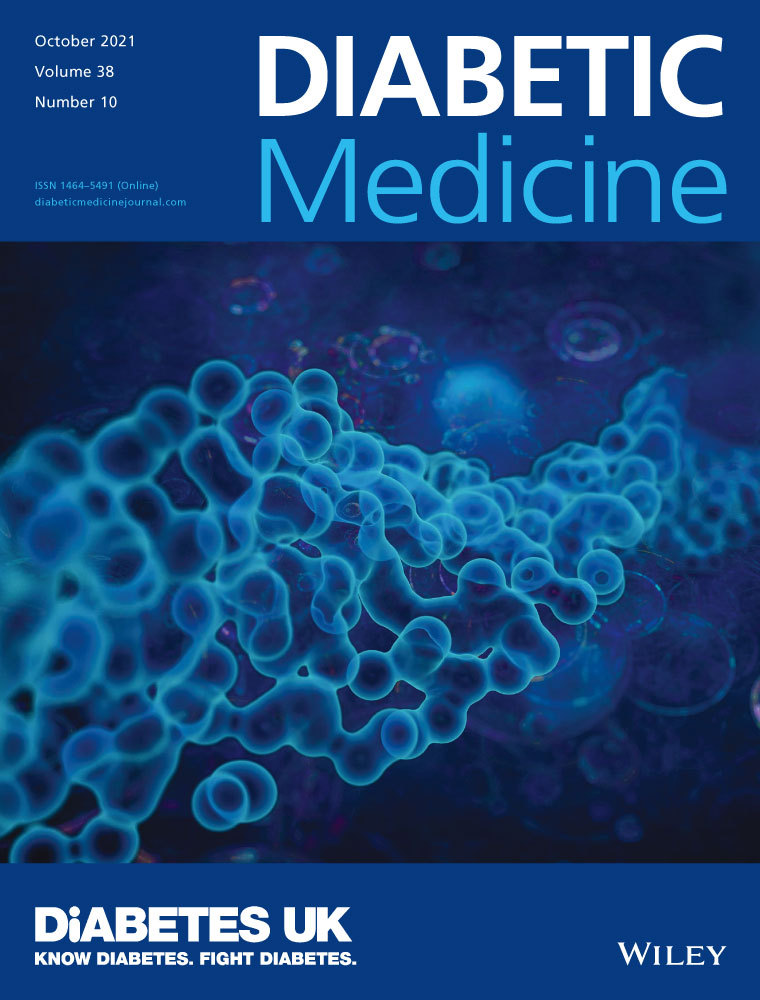Predicting major adverse limb events in individuals with type 2 diabetes: Insights from the EXSCEL trial
Funding information
EXSCEL was sponsored and funded by Amylin Pharmaceuticals Inc. (San Diego, CA), a wholly owned subsidiary of AstraZeneca (Gaithersburg, MD). E.H.W. receives support from the National Heart, Lung, and Blood Institute of the National Institutes of Health (NIH) (1R38HL143612), and J.B.B. is supported by grants from the NIH (UL1TR002489, P30DK124723).
Abstract
Aims
Although models exist to predict amputation among people with type 2 diabetes with foot ulceration or infection, we aimed to develop a prediction model for a broader range of major adverse limb events (MALE)—including gangrene, revascularization and amputation—among individuals with type 2 diabetes.
Methods
In a post-hoc analysis of data from the Exenatide Study of Cardiovascular Event Lowering (EXSCEL) trial, we compared participants who experienced MALE with those who did not. A multivariable model was constructed and translated into a risk score.
Results
Among the 14,752 participants with type 2 diabetes in EXSCEL, 3.6% experienced MALE. Characteristics associated with increased risk of MALE were peripheral artery disease (PAD) (HRadj 4.83, 95% CI: 3.94–5.92), prior foot ulcer (HRadj 2.16, 95% CI: 1.63–2.87), prior amputation (HRadj 2.00, 95% CI: 1.53–2.64), current smoking (HRadj 2.00, 95% CI: 1.54–2.61), insulin use (HRadj 1.86, 95% CI: 1.52–2.27), coronary artery disease (HRadj 1.67, 95% CI: 1.38–2.03) and male sex (HRadj 1.64, 95% CI: 1.31–2.06). Cerebrovascular disease, former smoking, age, glycated haemoglobin, race and neuropathy were also associated significantly with MALE after adjustment. A risk score ranging from 6 to 96 points was constructed, with a C-statistic of 0.822 (95% CI: 0.803–0.841).
Conclusions
The majority of MALE occurred among participants with PAD, but participants without a history of PAD also experienced MALE. A risk score with good performance was generated. Although it requires validation in an external dataset, this risk score may be valuable in identifying patients requiring more intensive care and closer follow-up.
CONFLICT OF INTEREST
EHW: None. RMC: None. YL: None. JBB: contracted consulting fees, paid to his institution and travel support from Adocia, AstraZeneca, Dance Biopharm, Eli Lilly, MannKind, NovaTarg, Novo Nordisk, Sanofi, Senseonics, vTv Therapeutics and Zafgen as well as grant support from NovaTarg, Novo Nordisk, Sanofi, Tolerion and vTv Therapeutics. He is also a consultant to Cirius Therapeutics Inc, CSL Behring, Mellitus Health, Neurimmune AG, Pendulum Therapeutics and Stability Health. He holds stock/options in Mellitus Health, Pendulum Therapeutics, PhaseBio and Stability Health. SGG: Research grant support (e.g. steering committee or data and safety monitoring committee) and/or speaker/consulting honoraria (e.g. advisory boards) from Amgen, AstraZeneca, Bayer, Boehringer Ingelheim, Bristol Myers Squibb, CSL Behring, Daiichi-Sankyo/American Regent, Eli Lilly, Esperion, Ferring Pharmaceuticals, GlaxoSmithKline, HLS Therapeutics, Janssen/Johnson & Johnson, Merck, Novartis, Novo Nordisk A/C, Pfizer, Regeneron, Sanofi, Servier; and salary support/honoraria from the Heart and Stroke Foundation of Ontario/University of Toronto (Polo) Chair, Canadian Heart Research Centre and MD Primer, Canadian VIGOUR Centre, Duke Clinical Research Institute, New York University Clinical Coordinating Centre and PERFUSE Research Institute. BK: employee of AstraZeneca. NI: employee of AstraZeneca. NJP: research grants from Regeneron Pharmaceuticals, Sanofi-Aventis, Boerhinger Ingelheim, Novo Nordisk and Verily Life Sciences. NS: consulting or speaker's bureau for Amgen, AstraZeneca, Boehringer Ingelheim, Novo Nordisk, Eli Lilly, Pfizer and Sanofi; and research support from Boehringer Ingelheim. RRH: grants from AstraZeneca, grants and personal fees from Bayer, Boehringer Ingelheim and Merck Sharp & Dohme Corp, personal fees from Novartis, Amgen and Servier, and financial support from Elcelyx, GlaxoSmithKline, Janssen and Takeda. AFH: research funding: AstraZeneca, GlaxoSmithKline, Merck, Novartis; Consulting: AstraZeneca, Bayer, Boehringer Ingelheim, Boston Scientific, Merck, Novartis, Pfizer. RJM: grants from AstraZeneca and GlaxoSmithKline and personal fees from AstraZeneca and Boehringer-Ingelheim. MRP: research support from AstraZeneca and Bayer, speaker fees from AstraZeneca and consulting for Bayer and Thrombosis Research Institute. WSJ: Research Grants from Agency for Healthcare Research and Quality, AstraZeneca, American Heart Association, Bristol-Myers Squibb, Doris Duke Charitable Foundation, Patient-Centered Outcomes Research Institute; Honorarium/other from American College of Radiology, Daiichi Sankyo.




